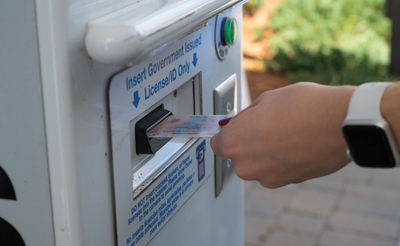
Maintaining Your Current Security System and When to Upgrade
Simple Fixes, Scenarios That Will Knock Everything Out, And Looking Ahead
By Brie Shouppe / Published February 2022

Almost all community security methods today are primarily technology-based. This includes software, cameras, access readers, gate systems, physical gates, and more. Just like the technology you use every day (i.e., phone, computer, and TV), these systems and/or equipment need proper maintenance, updates, and eventual upgrades.
Some system maintenance is and should be handled by an expert, and it should be noted that equipment maintenance and upgrades change from system to system and community to community. However, there are simple and helpful steps that communities can take to keep a system effectively operating. Property managers and board members can also plan for unexpected maintenance, especially during certain times of the year, as well as what to do when a system becomes obsolete.
Quick Tips
The easiest way to keep many security systems working optimally is to clean the equipment. This includes wiping camera lenses to clear off any dirt, smudges, or spider webs that may obstruct a camera’s view. While doing this, you can also check to see if any trees or other plants have grown in a way that block the camera.
If your community employs a gate access system at one or more entrances and this system utilizes any sort of ID scanner, the community should regularly clean any and all scanners. Cleaning cards are most often used to do this as they are the size and shape of a driver’s license. A cleaning card is easily inserted into a scanner to remove dirt and other residue which tends to build up and prevent a system from operating normally.
The frequency that scanners need to be cleaned depends largely on the size of the community and therefore the number of people who are providing identification at an entrance. The more activity with the system, the more it needs to be cleaned. Even for smaller communities, there will be holidays or events that mean a gate system scanner is used more than normal and should be cleaned before and after the holiday or high-traffic day.
Storm Season Expectations
When it comes to a certain time of the year in Florida, preparing for system maintenance or replacements is highly recommended. Storm season in this state can be unpredictable, and service providers like Brandon Quinn, the assistant manager of the service department at Envera Systems explains, “Communities really should plan for a three- to four-month period in which an entire system has the potential to go down if something happens.”
 The most common causes for issues during this time period are lightning strikes and surge scenarios. Under a normal service and maintenance plan (if one is in place with your provider), any damages caused by a storm are not covered. Replacing an entire system or pieces of equipment will, of course, depend on the size and type of the system. For most gate access solutions or amenity video surveillance and access systems, Quinn says, “An aggressive estimate would be between $3,000 to $5,000 for replacing an entire system.”
The most common causes for issues during this time period are lightning strikes and surge scenarios. Under a normal service and maintenance plan (if one is in place with your provider), any damages caused by a storm are not covered. Replacing an entire system or pieces of equipment will, of course, depend on the size and type of the system. For most gate access solutions or amenity video surveillance and access systems, Quinn says, “An aggressive estimate would be between $3,000 to $5,000 for replacing an entire system.”
An estimate like that doesn’t refer to replacement of one camera or equipment that can be purchased at your local store. With gate access systems, video surveillance, and other solutions that are provided by and/or monitored by a company, he says, “A lot of the devices are enterprise-grade. They are not everyday consumer products. These are heavy-duty routers, battery back-ups, and other devices, which is why it’s more expensive.”
To help with budgeting for these unexpected replacements, Quinn recommends that an association speak with an insurance company or representative about options that may cover some of the costs. “Some communities that we work with keep pictures of the equipment on hand so that they have the information ready to submit for insurance purposes,” he says.
Long-Term Considerations
Looking ahead, there are many factors to consider when a community is interested in upgrading a security system. If the actual technology is most important to the community, start by thinking about the equipment. “To quantify that, with the way that technology works, they are probably good for at least three years. Maybe start having a conversation about three years down the line to see if there is a better technology available,” says Quinn. This can include cameras with improved definition or new access readers that might be available.
Just because technology has changed, though, does not mean it is necessary for a community. When engaged in that type of conversation with board members or a property manager, Quinn focuses on “what the community truly uses the system for and what they are trying to get out the system.” Sometimes a community doesn’t need the most up-to-date technology, and he remarks, “If everything is working the way the community wants it, there’s no sense in trying to upgrade on top of that.”
All types of technology are constantly changing and updating. You might hear about some innovation or read about another, but that doesn’t mean a system provider has it readily available or even that it is compatible with current systems. Quinn reminds some communities, “Just because technology advances doesn’t mean that a company is able to upgrade on their end.” Most upgrades take research, time, and further development by a company to determine if the technological update will work the way communities need it to and affordably.
Whether it is regular maintenance or updates to inefficient equipment, communities should properly budget for both. It’s important to know what maintenance, if any, is included in a service plan with your provider. You can also talk with your vendor to know the specific replacement costs for your community’s equipment and which parts are needed most often.
The costs for a system upgrade will vary greatly. Simple updates to individual pieces of equipment will be the most minimal, whereas entire solution updates or changes can be much greater. If the latter of those two is the case but is not affordable right away, you can certainly discuss making the system updates in phases to help for budget purposes and saving up until all upgrades can be completed.
The final piece of system maintenance and upgrades is communication with residents. If a system is not functioning properly, help them to understand what has happened and how it will be addressed. Whether it needs to be cleaned, rebooted, or replaced, keeping them informed will answer their questions and concerns. When an upgrade is wanted or needed, residents should know the “why” behind a community’s decision to proceed with that as well. Community education about the solutions and processes in place, or coming soon, can be just as important as system maintenance.
Brie Shouppe
Director of Marketing and Business Development, Envera Systems
Brie Shouppe is the director of marketing and business development for Envera Systems. She manages the marketing team and works closely with all of Envera’s departments to provide information, education, and best-in-class service for the communities that Envera secures. Envera Systems is an all-inclusive security provider that focuses on the unique needs of communities through technology-based solutions. Using virtual guards located at Envera’s operating center, Envera is able to verify visitors at entrances, monitor video, manage a community’s database, and more. Contact info: (855) 380-1274 or www.EnveraSystems.com.




